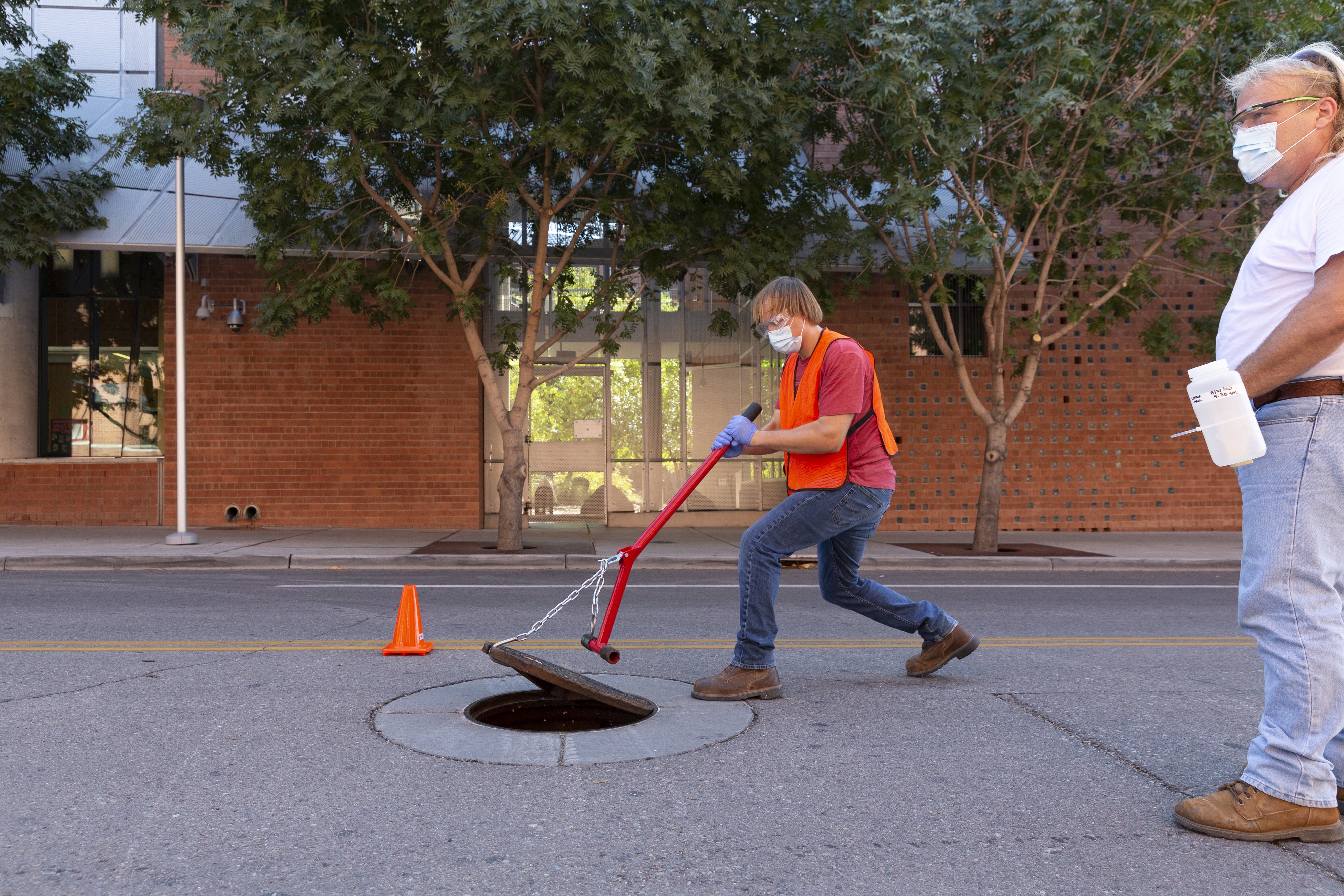
During the past three years of the pandemic, testing sewage water for the virus that causes COVID has become a valuable tool: it has spotted surging infections and new variants weeks before they showed up in medical clinics, for instance. The technology has also warned of other health threats such as seasonal viruses and increased opioid use.
But now its long-term ability to protect public health is in jeopardy. Funding uncertainty from the federal government and uneven commitments from state health departments have raised the specter that wastewater monitoring programs may shut down in the future.
The U.S. Centers for Disease Control and Prevention’s National Wastewater Surveillance System (NWSS), which includes the majority of wastewater testing sites in the U.S., is “fully funded through 2025,” says Amy Kirby, director of the program. But after that, “new sources of sustainable funding” are needed, Kirby says, ideally through the CDC’s regular budget rather than resources tied to COVID. Uncertainty about money—along with logistical challenges and questions about how to interpret data from this relatively novel source—has made some state governments hesitant to invest in the technology, leading to an uneven national system.
Wastewater surveillance is valuable because it provides data from thousands of people in one sample. Unlike COVID case counts, it doesn’t rely on individuals getting tested at a health care facility. “It doesn’t matter if everybody is willing to and is able to be tested in a given area or nobody is—we’re going to have the exact same data,” says Nathan LaCross, manager of the Utah Department of Health’s wastewater program. Sewage sampling became particularly useful last year as more people opted for at-home tests, which aren’t counted by health agencies, experts say.
Later this spring the end of the federal public health emergency for COVID is likely to make wastewater surveillance even more important as individual testing becomes more expensive and harder to access. For almost a year, testing data have been “increasingly unreliable” at providing an accurate case count, LaCross says. That’s why he expects to continue relying on wastewater data in 2023.
Some researchers and health officials are also working to expand their wastewater programs beyond COVID and have found that the technology can track a wide variety of health threats. For example, the WastewaterSCAN project tests for flu, respiratory syncytial virus (RSV), mpox, norovirus and human metapneumovirus (HMPV), as well as SARS-CoV-2. The pandemic “opened our imaginations” to new potential uses of wastewater, says Marlene Wolfe, a principal investigator of the SCAN project and an assistant professor at Emory University.
New York State’s health department recently announced that it will also expand its wastewater program to new diseases and add at least 90 more monitoring sites. David Larsen, an epidemiologist at Syracuse University who runs the New York State program, sees three directions for this expansion: preparing to track emerging pathogens (such as mpox and H5N1), improving monitoring of seasonal diseases (such as flu and RSV) and filling other “knowledge gaps” for local public health departments. The last category could include everything from opioid use to dangerous fungi. Biobot Analytics, a leading wastewater testing company, was originally founded to monitor the opioid crisis before pivoting to COVID in 2020, while Utah’s health department is working to track the fungus Candida auris, which can cause a dangerous infection, in sewage.
But additional funding is needed to continue these projects at the national level, and there are signs that the federal government may be reluctant to provide it. The Biden administration’s proposed 2024 budget does not include any mention of the CDC’s wastewater surveillance system, and public health funding bills have repeatedly stalled in Congress. A CDC program for state epidemiology and laboratory efforts was seriously underfunded before the pandemic, and the lack of clarity on new wastewater-specific money has led some states to hold off on monitoring.
In Vermont, for instance, funding worries and data modernization needs contributed to the state health department’s decision to wait on starting its own wastewater surveillance program, according to officials at the agency. Instead Vermont relies on a federal contract between the CDC and Biobot, which provides wastewater testing for rural areas, tribal sites and states that don’t have their own programs yet. This contract was recently extended for six months—a “relief” for Vermont epidemiologist Lynn Blevins, who has found Biobot’s data valuable.
State agencies also are having a tough time convincing sewage treatment plants to send them samples in some cases. The process is typically voluntary, which can be a tough sell when plants are understaffed. Rekha Singh, manager of the Virginia health department’s program, says she has spent “a lot of time” trying to bring more sites onboard.
Even the states that have built robust programs are still working on best practices for interpreting and acting on their data. Public health officials often don’t know what to do with wastewater data because these numbers represent large populations, not single cases that can be contact traced, Larsen says. Researchers are studying how wastewater trends could forecast hospitalization trends, how new variants or environmental factors might impact data and other analysis questions.
Answering these questions and providing more examples of public health benefits may help convince officials who are currently wary of wastewater surveillance that it’s worth the investment, Larsen says. In the future the places that invest will be more prepared for the next pandemic, he notes, while those that fail to develop this infrastructure may be caught off guard.
